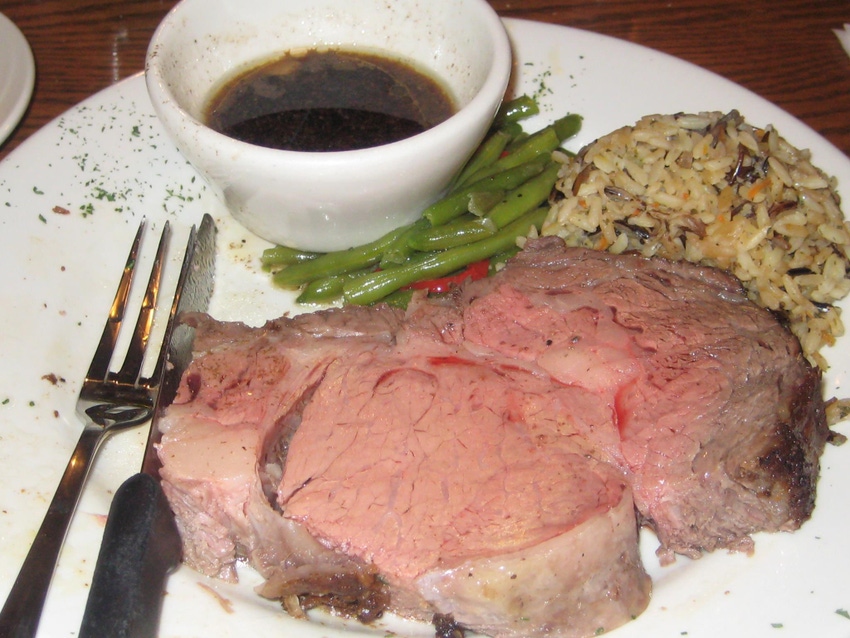What do consumers look for at the grocery store?
A new survey looks at the top priorities for consumers when making decisions at the grocery store. The results point to an increased focus on agricultural production practices.
August 6, 2018

On Sundays, our family’s routine is to attend church, grab breakfast somewhere and then stock up on groceries for the coming week. Even with a freezer full of beef at home, I still like to browse the meat case to take note of the packaging, labels, brands and prices.
As a shopper, I make selections, to a certain extent, on brand loyalty. For example, if there’s a brand of cheese, a type of cereal or a package of bacon we have enjoyed in the past, that’s usually what we tend to grab from week to week.
We definitely don’t make selections on any types of labeling claims. I’m not going to pay a premium for all-natural or organic. For us, if it tastes good and is reasonably priced, those two items are the basic criteria we follow in making our food choices at the grocery store.
And for a large majority of consumers, quality and price are the top priorities when shopping at the grocery store.
READ: Forget about romaine lettuce; consumers trust the safety of meat
However, a recent survey of 1,000 U.S. consumers, ages 21-65+, conducted by Category Partners (CP), revealed that many of today’s shoppers are becoming increasingly concerned about production practices when making their meat selections.
“Aside from quality and price, which always have been important to consumers, a significant number of today’s meat shoppers are more concerned about how their meat was raised, where it originated and its impact on their well-being,” said Cara Ammon, CP’s director of consumer research, in a press release.
The survey asked participants to select their top five of 20 attributes they considered when grocery shopping, and it found distinct differences in preferences based on geography, age, gender and race.
Geographically, the survey discovered that Midwest consumers are most likely to rank type of meat and sale/promotion as critical and least likely to rank all natural. In the Northeast, consumers list top factors including name quality, appearance, health and all natural, while value and price per pound were at the bottom of their list.
Southern consumers are most price sensitive, choosing for value and price per pound, as well as textured/tenderness, while name sales and promotions aren’t as important. Meanwhile, Western consumers are most likely to rank total price per package and cut as most important.
READ: How consumers confuse animal rights with animal welfare
Age differences were apparent with the 55+ crowd placing greater emphasis on quality and appearance. Participants who were over 45 years old were more likely to cite type of meat, value and price per pound and cut as important. Consumers under the age of 24 were more likely to name health, all natural, quantity/servings per pound and origin/locally sourced as deciding factors in their selections.
Gender determined some variances in shopping decisions. Woman are noticeably more concerned than men about quality/appearance, type of meat, health, all natural and animal welfare. Men were more focused than women on flavor/taste, total price per package, quantity and servings per package, intended use and origin/locally sourced.
Finally, Hispanics/Latinos placed more importance on all natural and origin/locally sourced while African Americans are more focused on leanness/fat content and organic.
By understanding the priorities of the different demographics of shoppers, we can better serve them and respond to factors that are most important to our consumers.
With Millennials outpacing everyone else in numbers and buying power, it’s important to note that this demographic is really worried about the origin of their products and is curious to know more about the ranchers behind the meats they select.
This focus emphasizes the importance of transparency and education. Our consumer wants to know the entire production story from pasture to plate, and they not only want to know that the animal lived a healthy, happy life, but they want to know that the end product is healthy and safe for their families, too.
The opinions of Amanda Radke are not necessarily those of beefmagazine.com or Farm Progress.
About the Author(s)
You May Also Like


.png?width=300&auto=webp&quality=80&disable=upscale)


